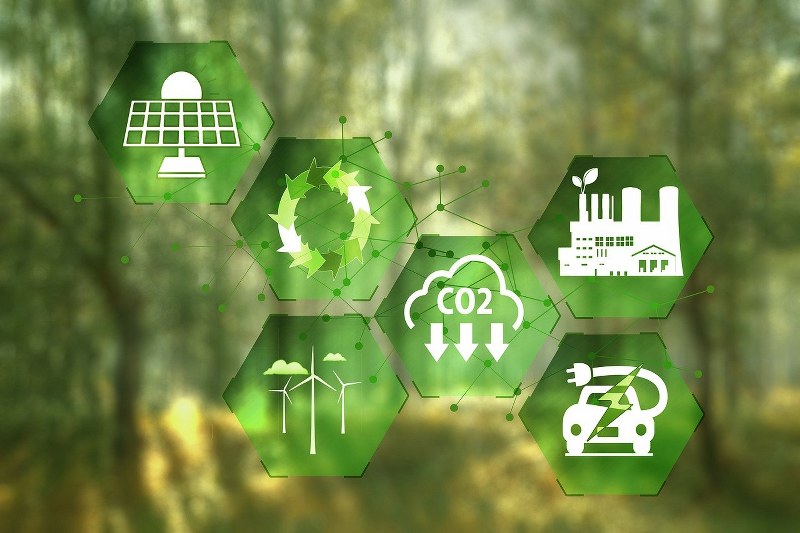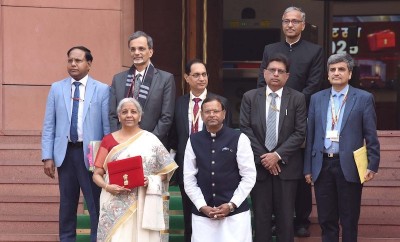
India inches closer to non-fossil fuel target as renewable energy capacity crosses 200 GW
New Delhi: India’s total renewable energy capacity has crossed 200 GW (gigawatt), aligning with the country's ambitious renewable energy target of achieving 500 GW from non-fossil sources by 2030.
According to the Central Electricity Authority, the total renewable energy-based electricity generation capacity now stands at 203.18 GW.
India's total renewable energy installed capacity surged by an impressive 24.2 GW (13.5%) in just one year, reaching 203.18 GW in October 2024, up from 178.98 GW in October 2023.
Including nuclear energy, India's total non-fossil fuel capacity rose to 211.36 GW in 2024, compared to 186.46 GW in 2023.
The development of solar parks, wind farms and hydroelectric projects have not only reduced reliance on fossil fuels but also strengthened the nation’s energy security.
When factoring in the 8,180 MW (megawatt) of nuclear capacity, the total non-fossil fuel-based power now accounts for almost half of the country's installed electricity generation capacity, signalling a strong move toward clean energy leadership on the global stage.
India's total electricity generation capacity has reached 452.69 GW, with renewable energy contributing a significant portion of the overall power mix.
As of October 2024, renewable energy-based electricity generation capacity stands at 203.18 GW, accounting for more than 46.3 percent of the country's total installed capacity.
This marks a major shift in India’s energy landscape, reflecting the country’s growing reliance on cleaner, non-fossil fuel-based energy sources.
A variety of renewable energy resources contribute to this impressive figure.
Solar power leads the way with 92.12 GW, playing a crucial role in India’s efforts to harness its abundant sunlight.
Wind power follows closely with 47.72 GW, driven by the vast potential of the coastal and inland wind corridors across the country.
Hydroelectric power is another key contributor, with large hydro projects generating 46.93 GW and small hydro power adding 5.07 GW, offering a reliable and sustainable source of energy from India’s rivers and water systems.
Biopower, including biomass and biogas energy, adds another 11.32 GW to the renewable energy mix. These bioenergy projects are vital for utilizing agricultural waste and other organic materials to generate power, further diversifying India’s clean energy sources. Together, these renewable resources are helping the country reduce its dependence on traditional fossil fuels, while driving progress toward a more sustainable and resilient energy future.
India’s renewable energy sector generated 1.02 million jobs in 2023, contributing significantly to the global renewable workforce, which grew to 16.2 million, according to IRENA's 2024 Annual Review.
Hydropower was the largest employer within India’s clean energy sector, supporting 453,000 jobs and making up 20% of the global total.
The solar photovoltaic (PV) sector also surged, creating 318,600 jobs as India added 9.7 GW of solar capacity, reaching 72.7 GW in total.
Employment in wind energy reached 52,200, with operations, maintenance, and installation roles comprising a significant share.
Other areas like biogas, biomass, and solar heating further diversified green employment.
Reflecting its climate goals, India’s commitments under the Paris Agreement include a 45% reduction in emissions intensity by 2030 and achieving 50% non-fossil power capacity by then, aiming for net-zero emissions by 2070.
Leading states in renewable energy capacity include Rajasthan (29.98 GW), Gujarat (29.52 GW), Tamil Nadu (23.7 GW), and Karnataka (22.37 GW).
Support Our Journalism
We cannot do without you.. your contribution supports unbiased journalism
IBNS is not driven by any ism- not wokeism, not racism, not skewed secularism, not hyper right-wing or left liberal ideals, nor by any hardline religious beliefs or hyper nationalism. We want to serve you good old objective news, as they are. We do not judge or preach. We let people decide for themselves. We only try to present factual and well-sourced news.







